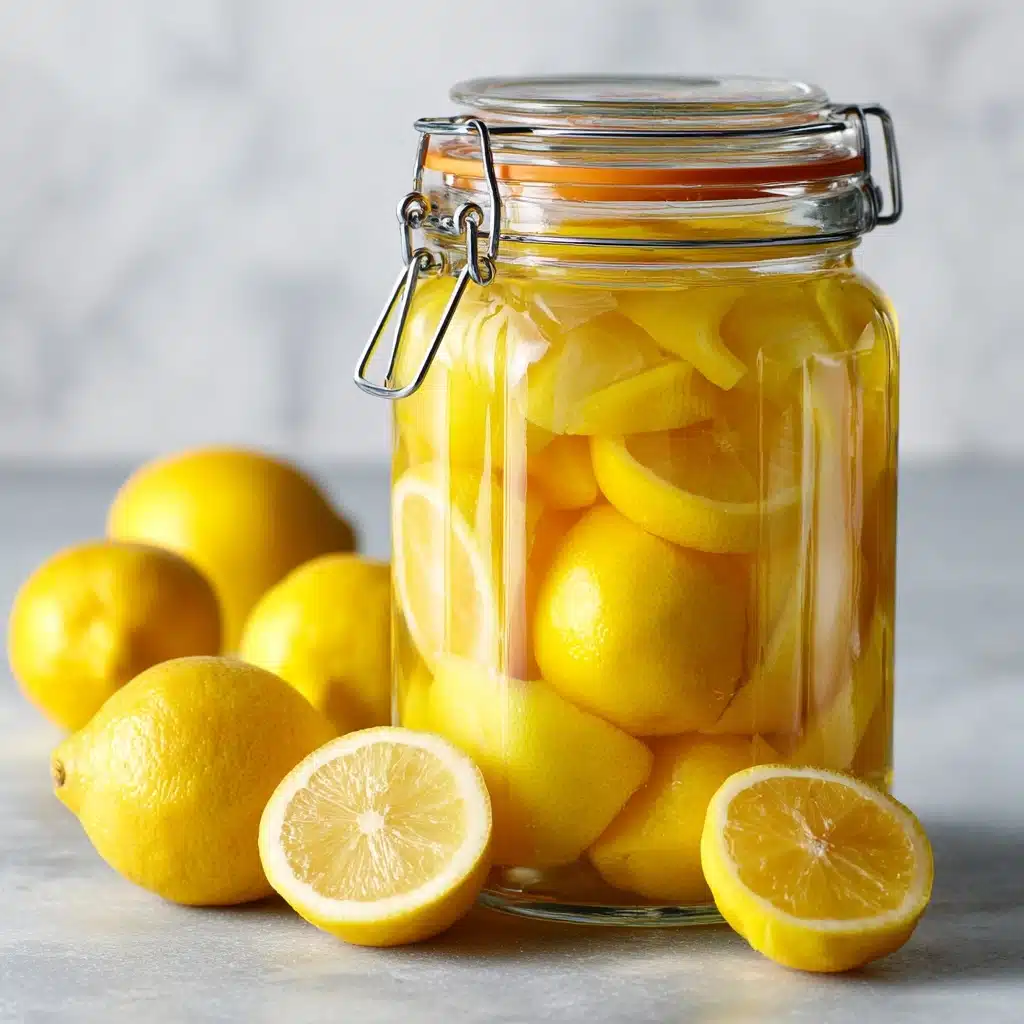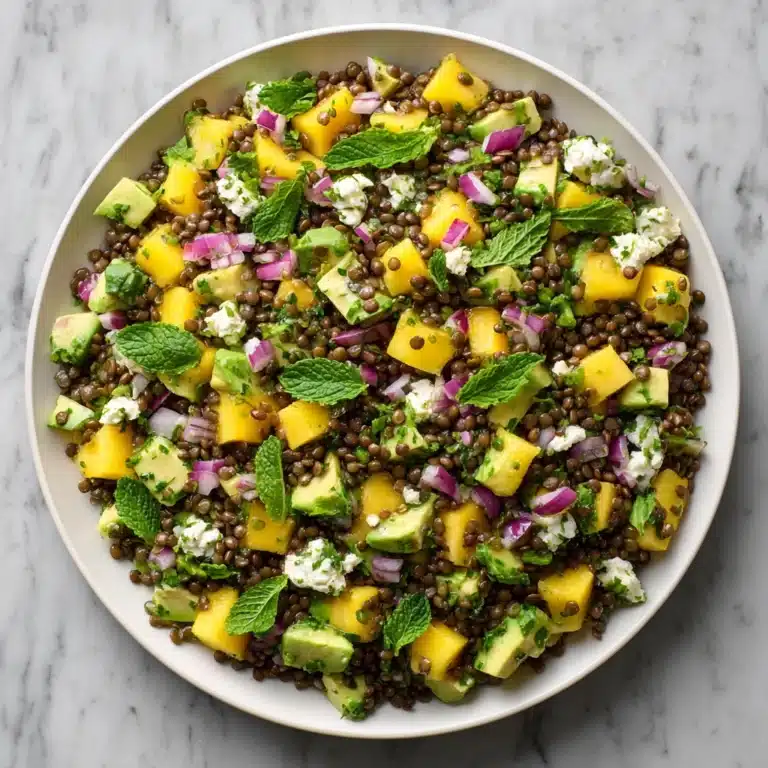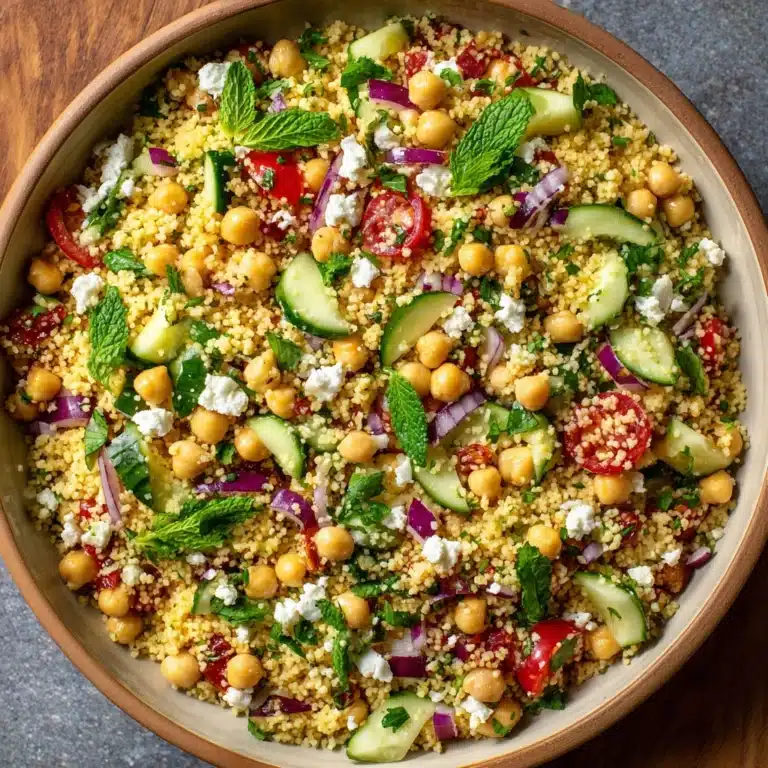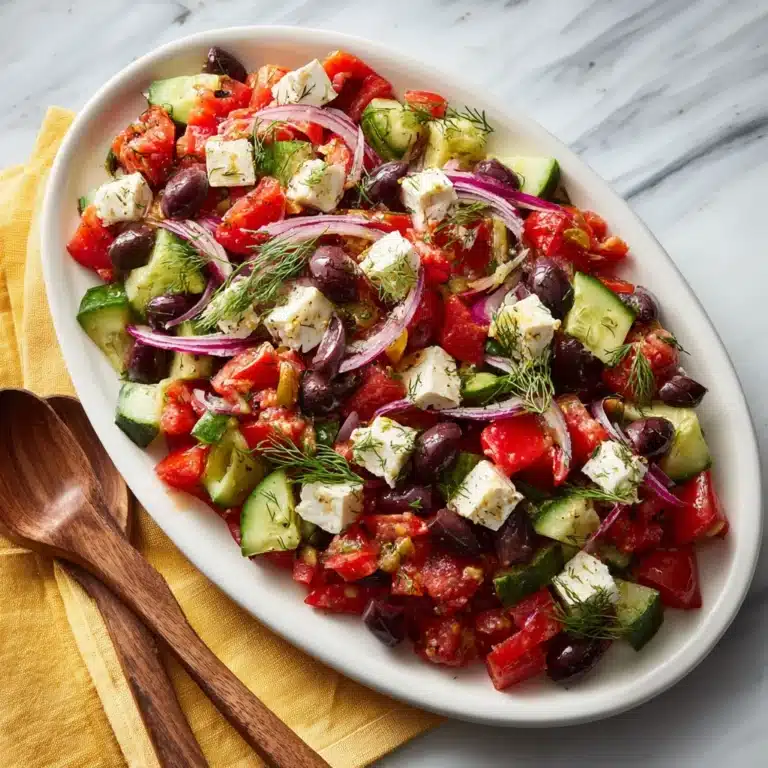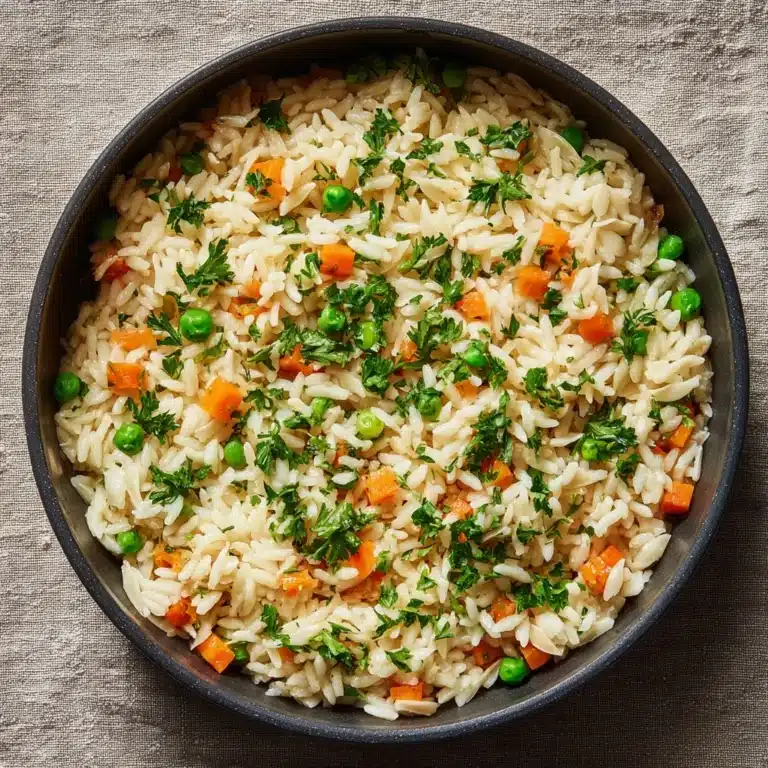If you’re craving something that will completely transform your home cooking with just a few minutes of prep, Moroccan Preserved Lemons are your ticket. These salted lemons are a centuries-old treasure in North African kitchens, known for their power to inject depth, brightness, and a magical touch of umami into everything from tagines to salads. Waiting for these lemons to cure is a delicious exercise in anticipation as they mellow into something complex, tangy, and unlike any ordinary citrus. Once you taste the aromatic, salty-citrus notes of Moroccan Preserved Lemons, you’ll wonder how you ever cooked without them!
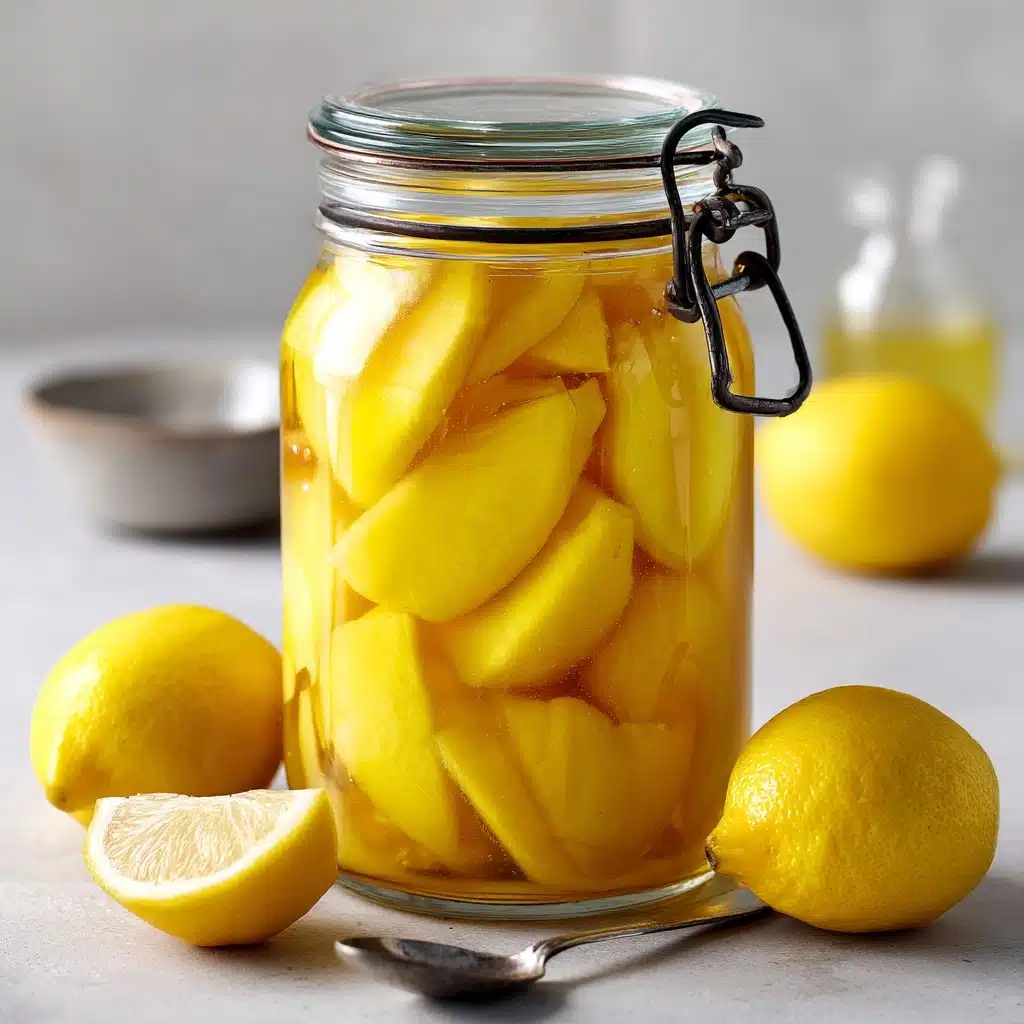
Ingredients You’ll Need
With just a handful of ingredients, each one shines and plays a crucial role in developing the bold flavors and silky textures of Moroccan Preserved Lemons. Here’s what you’ll want to gather before you start your lemon-preserving adventure.
- Organic lemons: Thin-skinned lemons work best because they soften beautifully and quickly absorb the salty brine’s tangy flavors.
- Kosher salt: This acts as both a preservative and flavor booster, drawing out the lemon juice and guarding against any spoilage as the lemons ferment.
- Fresh lemon juice: Extra juice is essential to cover the lemons completely, ensuring an even cure and vibrant citrusy base for the brine.
- Cinnamon stick (optional): Just one stick lends a touch of spicy warmth that wafts through every bite.
- Cloves (optional): A few cloves add subtle earthiness and a delightful hint of perfumed spice.
- Black peppercorns (optional): These bring a gentle background heat and savory layer to the lemons.
- Bay leaves (optional): Their herbal fragrance rounds out the complexity, providing the lemons with that elusive Moroccan character.
How to Make Moroccan Preserved Lemons
Step 1: Scrub and Prep the Lemons
Start by giving your lemons a thorough scrub under running water to remove any wax or surface residue. Choose organic lemons when possible, since you’ll be eating the rind. Once clean, slice off just the stem end, and get ready to create the perfect base for the salty cure.
Step 2: Make the “Flower” Cuts
Take each lemon and cut it lengthwise into quarters, but don’t cut all the way through—leave the base intact so the lemon opens up like a beautiful flower. This technique allows you to pack plenty of salt inside while keeping the lemon whole and easy to stack neatly in the jar.
Step 3: Salt and Layer
Generously sprinkle kosher salt inside every cut lemon, making sure each section is well coated. As you work, start packing the salted lemons firmly into a large, sterilized jar. If you enjoy extra complexity, tuck in your cinnamon stick, cloves, peppercorns, and bay leaves between the layers. Press down gently on the lemons to begin coaxing out some juice.
Step 4: Top Up with Lemon Juice
Once all the lemons are snugly tucked into the jar, pour fresh lemon juice over them until they’re completely submerged. This bath of tart, briny goodness is crucial for proper preservation and ensures that every bit of peel becomes intoxicatingly flavorful.
Step 5: Cure and Wait
Seal the jar tightly, then store it at room temperature for three days. Make it a habit to give the jar a gentle daily shake to redisperse the salt and juices. After three days, transfer the jar to the fridge and let the magic happen. The hardest part: waiting at least 3–4 weeks for your Moroccan Preserved Lemons to fully cure and develop their signature soft texture and bold, tangy flavor.
How to Serve Moroccan Preserved Lemons
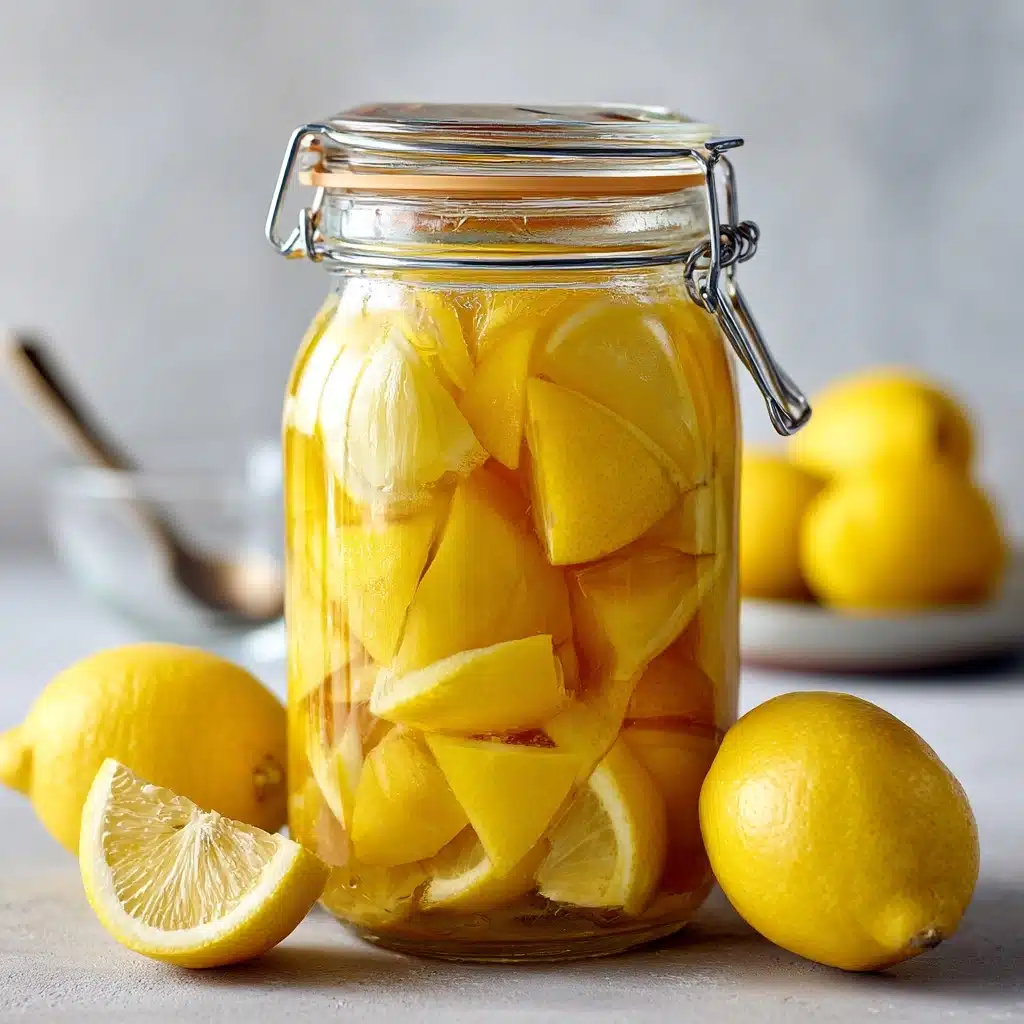
Garnishes
Thinly slivered Moroccan Preserved Lemons make an eye-catching, zesty garnish for couscous, grain bowls, and soups. Their bright yellow hue adds a pop of color, while the concentrated citrusy-salty flavor brightens any plate. Just a few shreds can instantly elevate your favorite roasted vegetables or grilled fish.
Side Dishes
They’re classic in traditional Moroccan dishes like chicken tagine with olives or buttery chickpea stews. Chop the rind and mix it into simple salads or sprinkle over warm lentils to bring unmistakable aromatic depth. These lemons also shine tossed with roasted potatoes or stirred into creamy yogurt dips.
Creative Ways to Present
Beyond North African fare, try whisking minced preserved lemon rind into vinaigrettes, homemade hummus, or pasta sauces for a citrusy twist. They can even be finely chopped and added to compound butters or cheese spreads for a sophisticated, unexpected layer of flavor. Moroccan Preserved Lemons invite culinary creativity at every turn!
Make Ahead and Storage
Storing Leftovers
Once opened, keep your jar of Moroccan Preserved Lemons tightly sealed and entirely submerged in brine in the refrigerator. They’ll keep for up to six months, so you can dip in and add a punch of flavor to your cooking anytime inspiration (or craving) strikes.
Freezing
While you can technically freeze preserved lemons, it’s rarely necessary since they last so long in the fridge. Freezing may slightly alter their texture, making the rind a bit mushy, but if you need to, store them chopped and portioned in an airtight container for up to three months.
Reheating
Moroccan Preserved Lemons are typically used cold or at room temperature as an ingredient. If you’re adding them to a hot dish, simply stir them in at the end of cooking to preserve their fresh flavor and delicate texture, rather than cooking or reheating them directly.
FAQs
Can I use regular table salt instead of kosher salt?
Kosher salt is preferred for its clean, pure flavor and ability to dissolve easily, but if you only have table salt, you can use it—just reduce the amount slightly since table salt is denser and saltier by volume.
Do I need to sterilize the jar first?
Yes, using a sterilized jar is essential when making Moroccan Preserved Lemons to prevent unwanted bacteria from spoiling your lemons as they cure. Simply wash your jar thoroughly and then heat it in boiling water for a few minutes before use.
Why do I discard the pulp before using?
After curing, the rind becomes the star: it’s soft, fragrant, and packed with flavor, while the pulp is usually too salty and intense for most recipes. You can occasionally use the pulp in sauces, but most dishes call just for the preserved rind.
How do I know if my preserved lemons have gone bad?
If you notice any signs of mold, unusual off smells, or drastically darkened lemon peels, it’s best to start over. As long as the lemons are submerged in brine, they’re quite safe and spoil-resistant.
Are Moroccan Preserved Lemons suitable for gluten-free or vegan diets?
Absolutely! They contain only lemons, salt, and (if desired) whole spices. Moroccan Preserved Lemons are naturally vegan, gluten-free, and even paleo-friendly, making them a superb condiment for nearly any table.
Final Thoughts
If you’ve never made Moroccan Preserved Lemons at home, now’s the time to unlock a whole new world of bright, vibrant eating. Just a little patience and a handful of simple ingredients will reward you with jars of pure culinary sunshine—ready to bring bold Moroccan flair to every meal. Happy preserving!
Print
Moroccan Preserved Lemons Recipe
- Total Time: 15 minutes (plus curing time)
- Yield: 1 quart jar 1x
- Diet: Vegan
Description
Learn how to make Moroccan preserved lemons at home with this simple recipe. These salt-preserved lemons are a staple in Moroccan cuisine, adding a unique salty-citrus flavor to various dishes.
Ingredients
Ingredients:
- 6 organic lemons (preferably thin-skinned)
- 1/4 cup kosher salt (plus more for packing)
- 1/2 cup fresh lemon juice (from about 4 lemons)
- Optional spices: 1 cinnamon stick, 3–4 cloves, 5–6 black peppercorns, 2 bay leaves
Instructions
- Scrub the lemons: Thoroughly wash the lemons to remove any wax or residue.
- Prepare the lemons: Cut off the stem end of each lemon, then quarter them lengthwise without cutting all the way through.
- Salt the lemons: Sprinkle kosher salt inside each lemon.
- Pack the lemons: Place the salted lemons tightly in a sterilized jar, layering with optional spices if desired.
- Add lemon juice: Pour fresh lemon juice over the lemons to submerge them completely.
- Cure the lemons: Let the jar sit at room temperature for 3 days, shaking it daily. Refrigerate for 3–4 weeks before use.
Notes
- Use only the rind of preserved lemons in cooking.
- Preserved lemons are great in tagines, salads, and sauces.
- Store in the refrigerator for up to 6 months.
- Prep Time: 15 minutes
- Cook Time: 0 minutes
- Category: Condiment
- Method: Fermenting
- Cuisine: Moroccan
Nutrition
- Serving Size: 1 tablespoon (rind only)
- Calories: 5
- Sugar: 0g
- Sodium: 450mg
- Fat: 0g
- Saturated Fat: 0g
- Unsaturated Fat: 0g
- Trans Fat: 0g
- Carbohydrates: 1g
- Fiber: 0.3g
- Protein: 0g
- Cholesterol: 0mg
